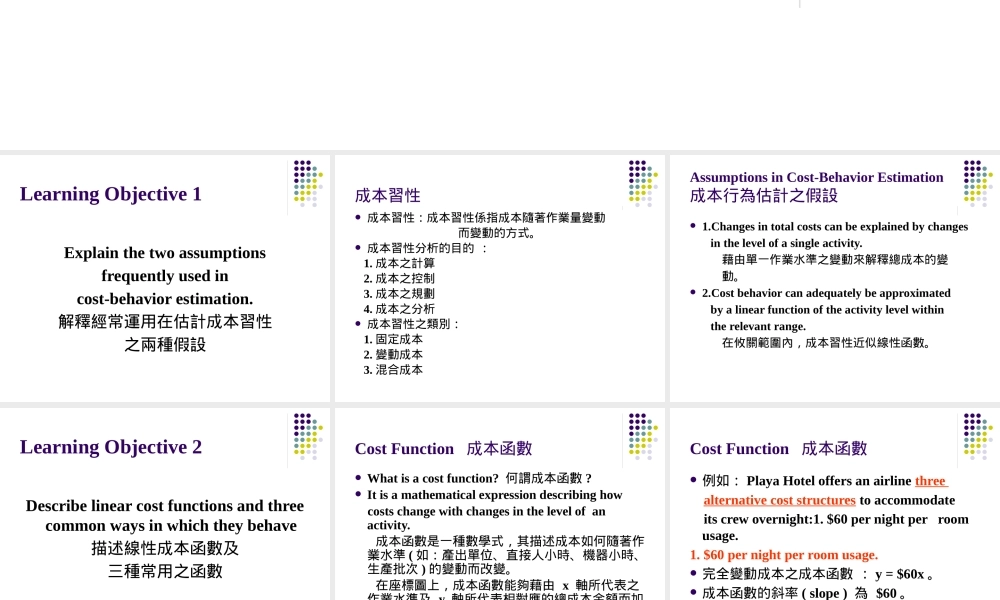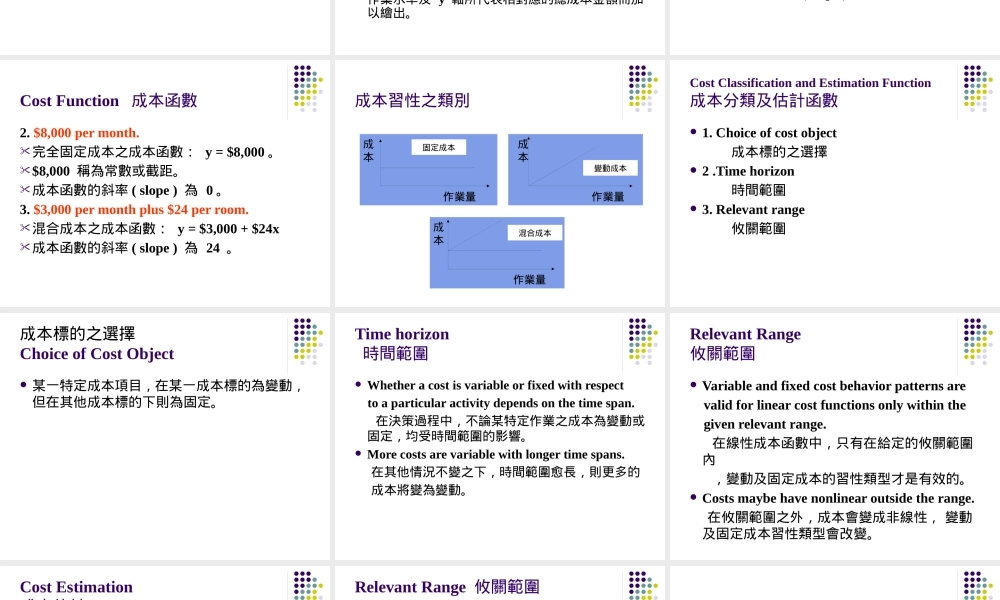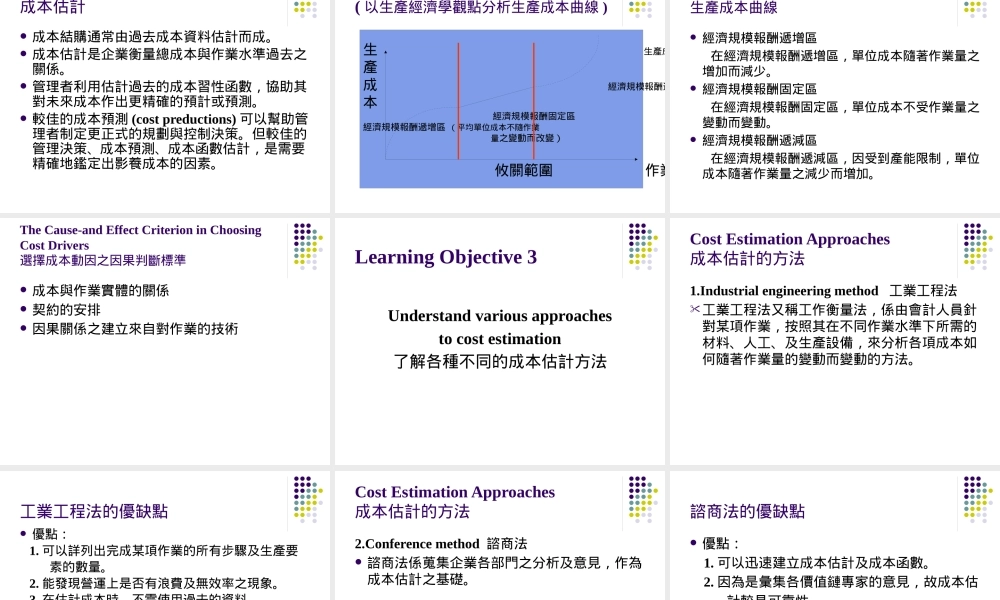Determining HowCosts Behave如何決定成本習性Chapter 10Learning Objective 1Explain the two assumptionsfrequently used incost-behavior estimation.解釋經常運用在估計成本習性之兩種假設成本習性 成本習性:成本習性係指成本隨著作業量變動 而變動的方式。 成本習性分析的目的 : 1. 成本之計算 2. 成本之控制 3. 成本之規劃 4. 成本之分析 成本習性之類別: 1. 固定成本 2. 變動成本 3. 混合成本Assumptions in Cost-Behavior Estimation成本行為估計之假設 1.Changes in total costs can be explained by changes in the level of a single activity. 藉由單一作業水準之變動來解釋總成本的變 動。 2.Cost behavior can adequately be approximated by a linear function of the activity level within the relevant range. 在攸關範圍內,成本習性近似線性函數。Learning Objective 2Describe linear cost functions and three common ways in which they behave描述線性成本函數及三種常用之函數Cost Function 成本函數 What is a cost function? 何謂成本函數 ? It is a mathematical expression describing how costs change with changes in the level of an activity. 成本函數是一種數學式,其描述成本如何隨著作業水準 ( 如:產出單位、直接人小時、機器小時、生產批次 ) 的變動而改變。 在座標圖上,成本函數能夠藉由 x 軸所代表之 作業水準及 y 軸所代表相對應的總成本金額而加以繪出。 例如: Playa Hotel offers an airline three alternative cost structures to accommodate its crew overnight:1. $60 per night per room usage.1. $60 per night per room usage. 完全變動成本之成本函數 : y = $60x 。 成本函數的斜率 ( slope ) 為 $60 。Cost Function 成本函數2. $8,000 per month. 完全固定成本之成本函數: y = $8,000 。$8,000 稱為常數或截距。成本函數的斜率 ( slope ) 為 0 。3. $3,000 per month plus $24 per room. 混合成本之成本函數: y = $3,000 + $24x成本函數的斜率 ( slope ) 為 24 。Cost Function 成本函數成本習性之類別成本 作業量 成 本 作業量成...




